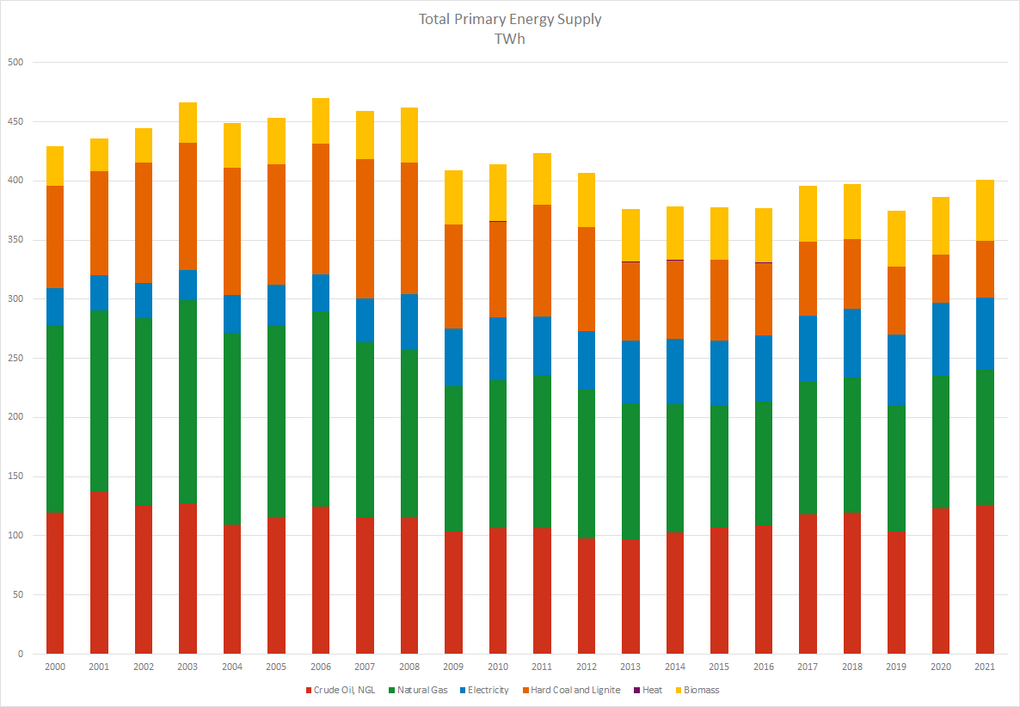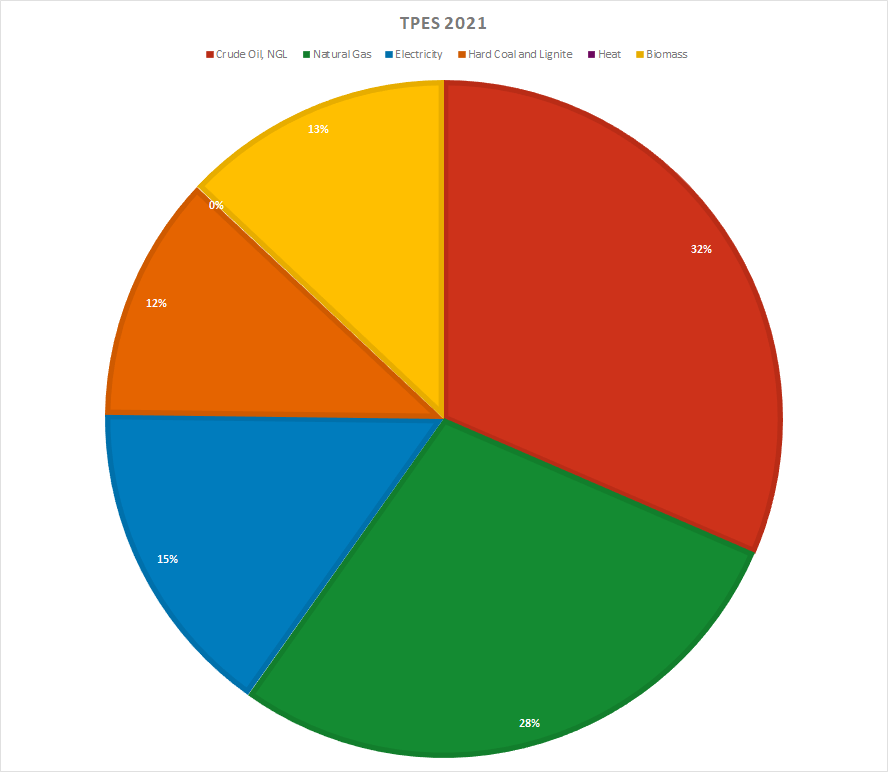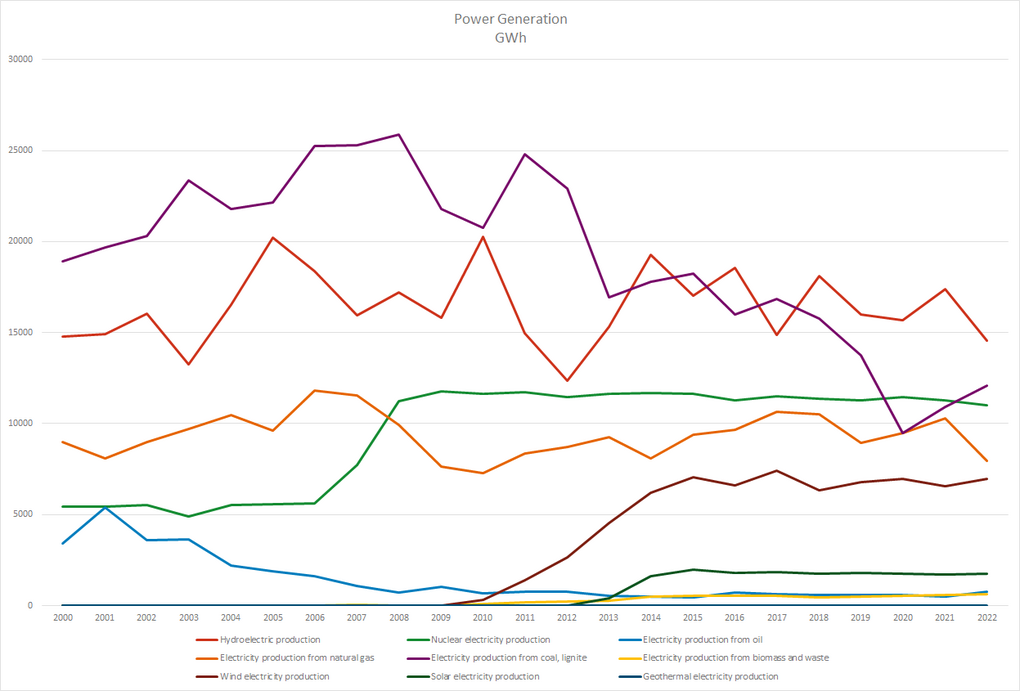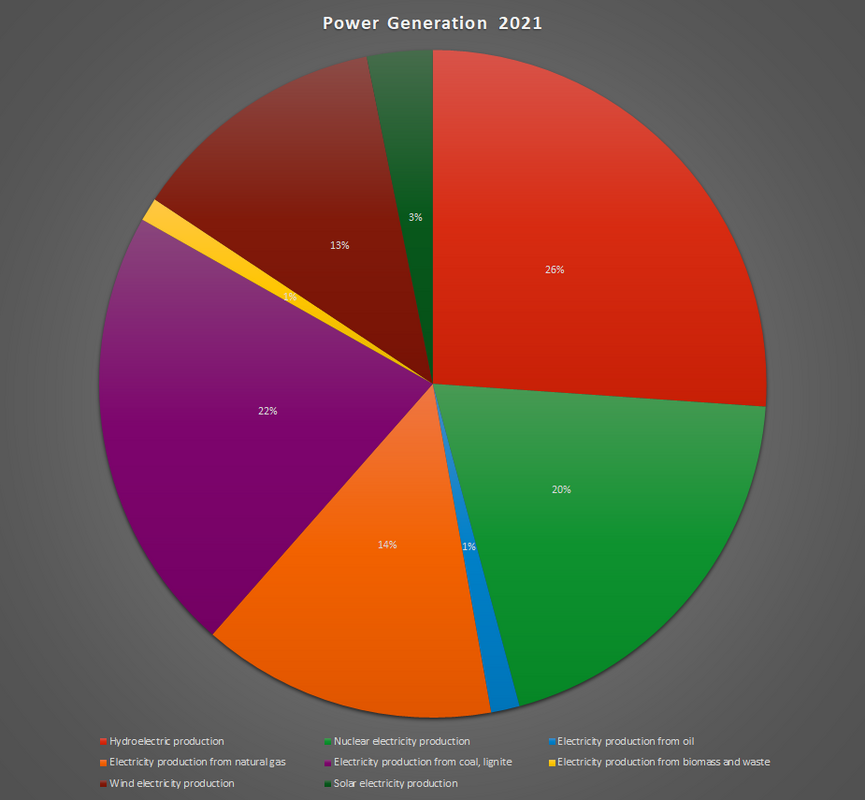Energy Supply
Resources
Serbia has limited oil and gas reserves but it has a significant lignite reserves.
Serbia has always been a net importer of oil and oil products and imports nearly 3/4 of its oil consumption. Although crude production rebounded over the period 2008-2013 after the acquisition of NIS by Gazprom, it has been on a declining trend ever since and in 2015 stood at 1.15 mtoe, the lowest level since 2011. Production has been falling mainly because of a lack of investments and unfavourable oil prices and margins over the past two years. Crude oil imports rose by 14% in 2019. In 2020, Serbia imported $853M in Crude Pretrolium, becoming the 52nd largest importer of Crude Pretrolium in the world. Imports came from Iraq, Russia, Kazakhstan, Romania and Croatia. The country has a refining capacity of 96.000 b/d only at NIS's Pancevo refinery. Crude oil operations at the 50.000 b/d Novi Sad refinery were ceased in 2012 and the refinery now produces lubricants. Around 70% of domestic oil supply is covered without import.
Lignite extraction and transformation activities are carried out from open sky mines in two fields: Kolubara and Kostolac. In 2014, both fields were affected by floods and as a result, lignite supply fell sharply by 26 % to 30 million tonnes. In 2015, production has recovered and Kolubara provides more than 75% of production (29 million tonnes) and Kostolac around 8.4 million tonnes. The production in 2019 accounted for 6.96 Mtoe and rose by another 4% in 2021.
With strong domestic coal production and large resource capacities, Coal and Lignite are the most used energy source in Serbia (49%), followed by imported crude oil (24%). Natural Gas (12%) and Biomass (10%) follow and finally electricity makes up 5%.
Electricity
In 2021, Serbia's oil and gas reserves will be relatively small (11 Mt and less than five bcm, respectively), but its lignite deposits will be substantial (7.1 GT). There is a 27 TWh hydropower potential.
At the end of 2020, the installed capacity was 7.9 GW, with lignite accounting for 4.2 GW, hydropower for 3 GW, wind for 397 MW—including the 158 MW ibuk and 104 MW Kovaica wind projects—and oil and gas facilities for the remaining 1.6 GW (less than 300 MW). In 2021, renewable energy production was constant. The two main lignite-fired power stations are the 2.8 GW Nikola Tesla-A-B and the 0.9 GW Kostolac A-B. The two largest hydroelectric facilities are the 1 GW Bajina Bata and the 1.4 GW Djerdap 1-2.
Since 2017, there has been a small increase in power production, reaching 38 TWh in 2020. When floods prevented the Tesla power plant from producing in 2014, it fell by 15%. Depending on hydrological conditions, lignite makes up a considerable portion of the power mix (between 24% and 34% for hydro since 2010). While lignite-fired generation increased by 3.3% to 26.5 TWh (70% of the power mix), hydropower generation fell by 4.4% to 9.7 TWh (26% of the power mix) in 2020. Technical issues at the Tesla power complex decreased lignite-fired power generation in December 2021, causing extensive power disruptions and increasing the need for imported electricity.
Bosnia and Herzegovina (100 MW), Croatia (150 MW), Montenegro (100 MW), Albania, Kosovo, Hungary (300 MW in 2021), Romania (250 MW), Northern Macedonia (100 MW), Croatia (150 MW), Bulgaria (150 MW), Montenegro, and Kosovo are the other 8 nations with whom Serbia is connected. Recently, two new 400 kV lines were put into service: one between Panevo and Resita in Romania and one between Vranje and Tip in Macedonia. Serbia must organize bilateral auctions with its partners because it does not participate in a regional capacity distribution framework. Exchanges of electricity are dependent on hydropower circumstances; since 2012, Serbia has generally been a net importer (except in 2013, 2015, 2016, and 2021). 2021 saw 5.1 TWh (a -6%) of imports and 5.7 TWh (a -6%) of exports.
Source: Enerdata
Last update: 07 2023




